As shown in the figure a variable force F is applied on conducting wire of length l such that its velocity remians. There is no resistance in any branch in the circuit. Consider the motion of wire from t=0 initially there is no current in inductor now when wire has covered a distance x (from initial position) Then at that time energy of inductor will be. (Neglect gravity)
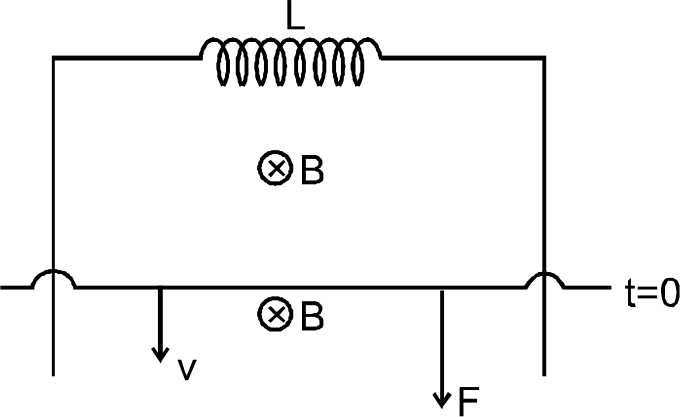
independent of x
directly proportional to x
directly propportional to x2
directly proportional to x10
Current in circuit at any time t=(B/vLt)2
t=xv
So, E∝x2
Topper's Solved these Questions
Similar Questions
A rod of length l is kept parallel to a long wire carrying constant current i . It is moving away from the wire with a velocity v.F∈dtheemf∈duced∈thewirewhenitsdistance∈thewirewhenitsdistanceomthelongwireisx.
View SolutionA rectangular conducting loop of length 4 cm and width 2 cm is in the xy-plane, as shown in the figure. It is being moved away from a thin and long conducting wire along the direction n √3/ 2 ˆx + 1/2 ˆy with a constant speed v.The wire is carrying a steady current I = 10A in the positive x-direction. A current of 10 μA flows through the loop when it is at a distance d = 4 cm from the wire. If the resistance of the loop is 0.1Ωthen the value of v is ____________ms ^(- 1)
[Given: The permeability of free space μ_0 = 4pi xx10 ^(- 7) N A ^(- 2) ]
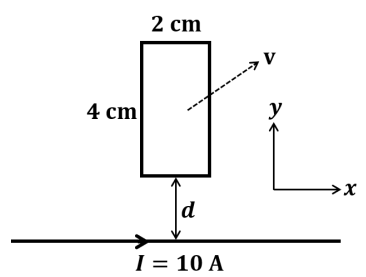
View Solution
Knowledge Check
Two ends of an inductor of inductance L are connected to two parallel conducting wires. A rod of length l and mass m is given velocity v0 as shown. The whole system is placed in perpendicular magnetic field B. Find the maximum current in the inductor. (Neglect gravity and friction)
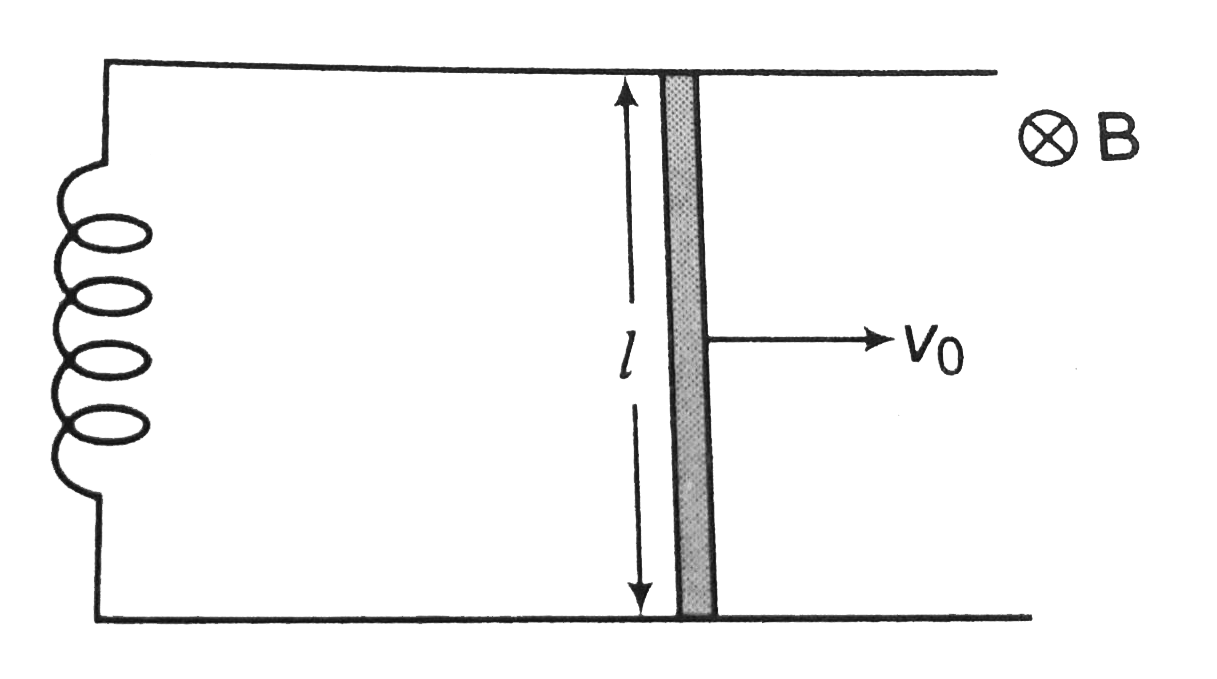 Amv0LB√mLv0Cmv20LDNone of these
Amv0LB√mLv0Cmv20LDNone of theseConsider a L-R circuit shown in figure. There is no current in circuit switch S is closed at t = 0, time instant when current in inductor is equal to current in resistor 2R will be :
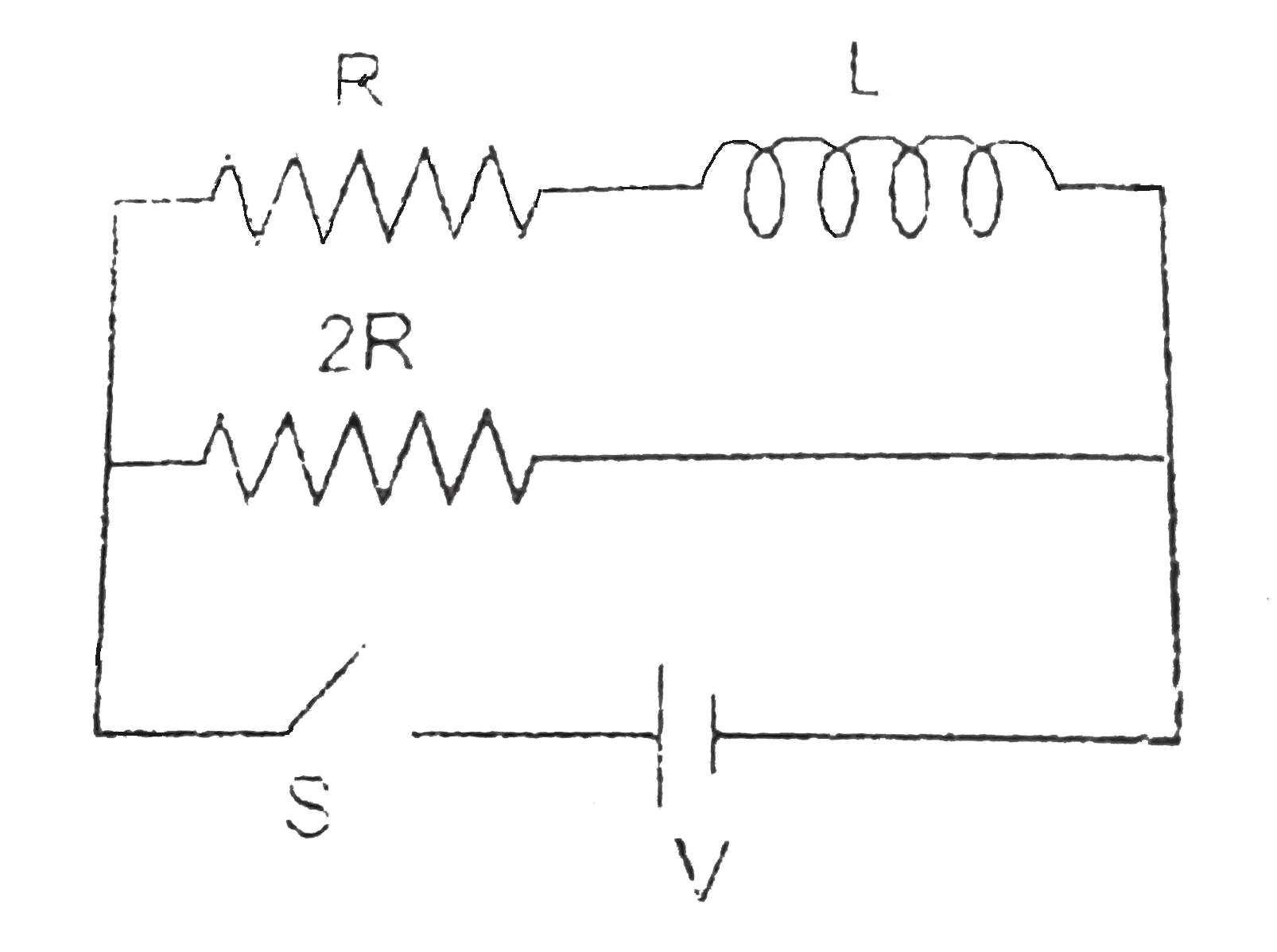 ALRln2B2LRln2CL2Rln2DL2R
ALRln2B2LRln2CL2Rln2DL2R
A wire has an elongation of 0.04m when a force F is applied on it . Now its length & diameter are double and same force F is applied on it. Find new elongation in the wire
View SolutionA conducting circular loop of radius a and resistance per unit length R is moving with a constant velocity v0 , parallel to an infinite conducting wire carrying current i0. A conducting rod of length 2a is approaching the centre of the loop with a constant velocity v02 along the direction 2 of the current. At the instant t=0, the rod comes in contact with the loop at A and starts sliding on the loop with the constant velocity. Neglecting the resistance of the rod and the self-inductance of the circuit, find the following when the rod slides on the loop.
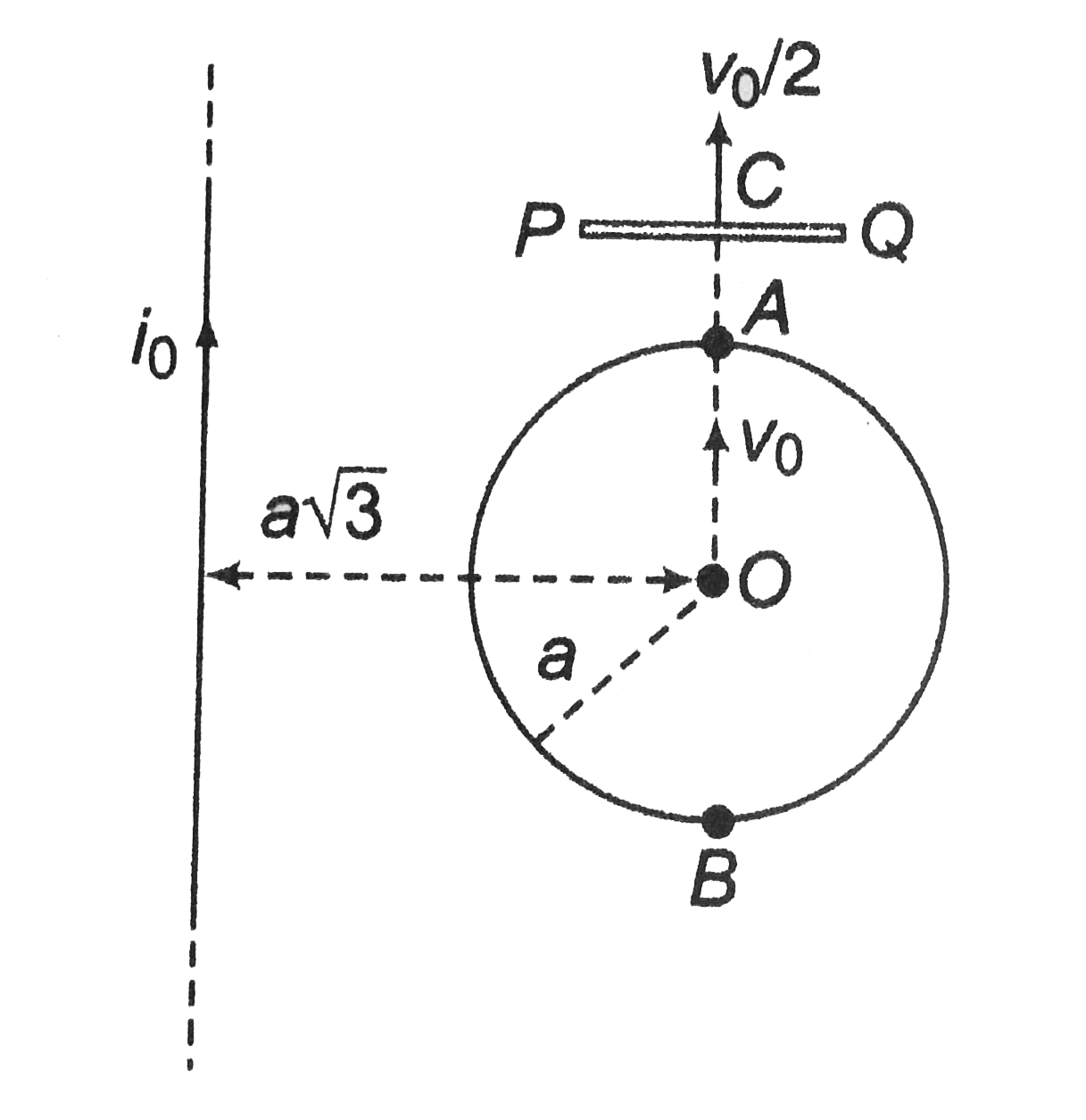
(a) The current through the rod when it is at a distance of (a2) from the point A of the loop.
(b) Force required to maintain the velocity of the rod at that instant.
View SolutionIn Fig a rod of length l and mass m moves with an intial velocity u on a fixed frame containing inductor L and resistance R.PQ and MN are smooth conducting wires. There is auniform magnetic field of strength B. Initially, there is no current in the inductor. find the total cherge flows through the inductor by the time, velocity of rod becomes νf and the rod has travelled a distance x.
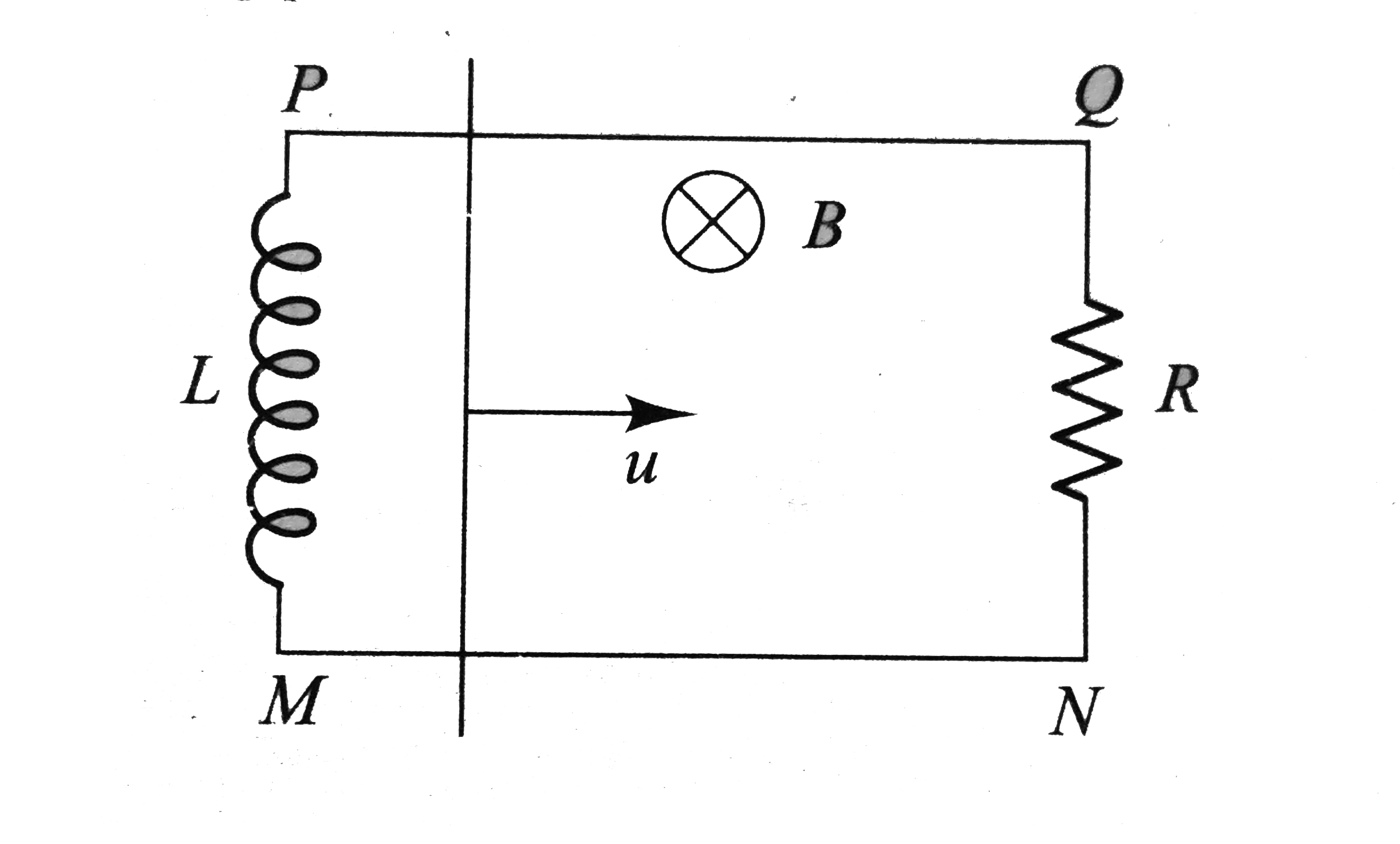
View SolutionA bead moves along a straight horizontal wire of length L, starting from the left end with velocity v0. Its retardation is proportional to the distance that remains to the right end of the wire. Find the initial retardation (at left end of the wire) if the bead reaches the right end of the wire with a velocity v02.
View SolutionAn equilateral triangle of side length l is formed from a piece of wire of uniform resistance. The current I is as shown in figure. Find the magnitude of the magnetic field at its centre O.

View SolutionA rod of length l is rotating with an angular speed ω about its one end which is at a distance a from an infinitely long wire carrying current i.Find the emf induced in the rod at the instant shown in the figure.
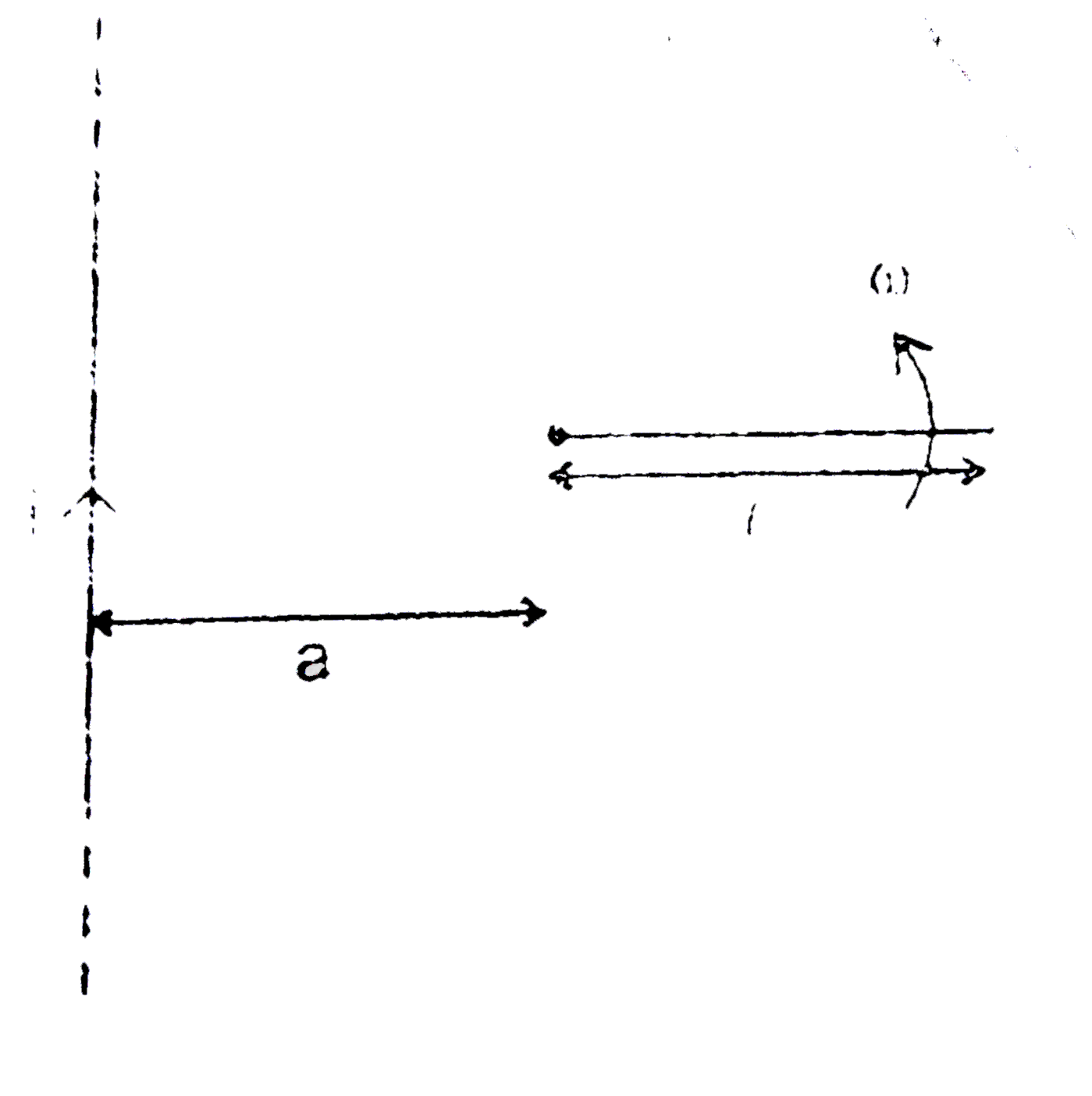
View Solution

